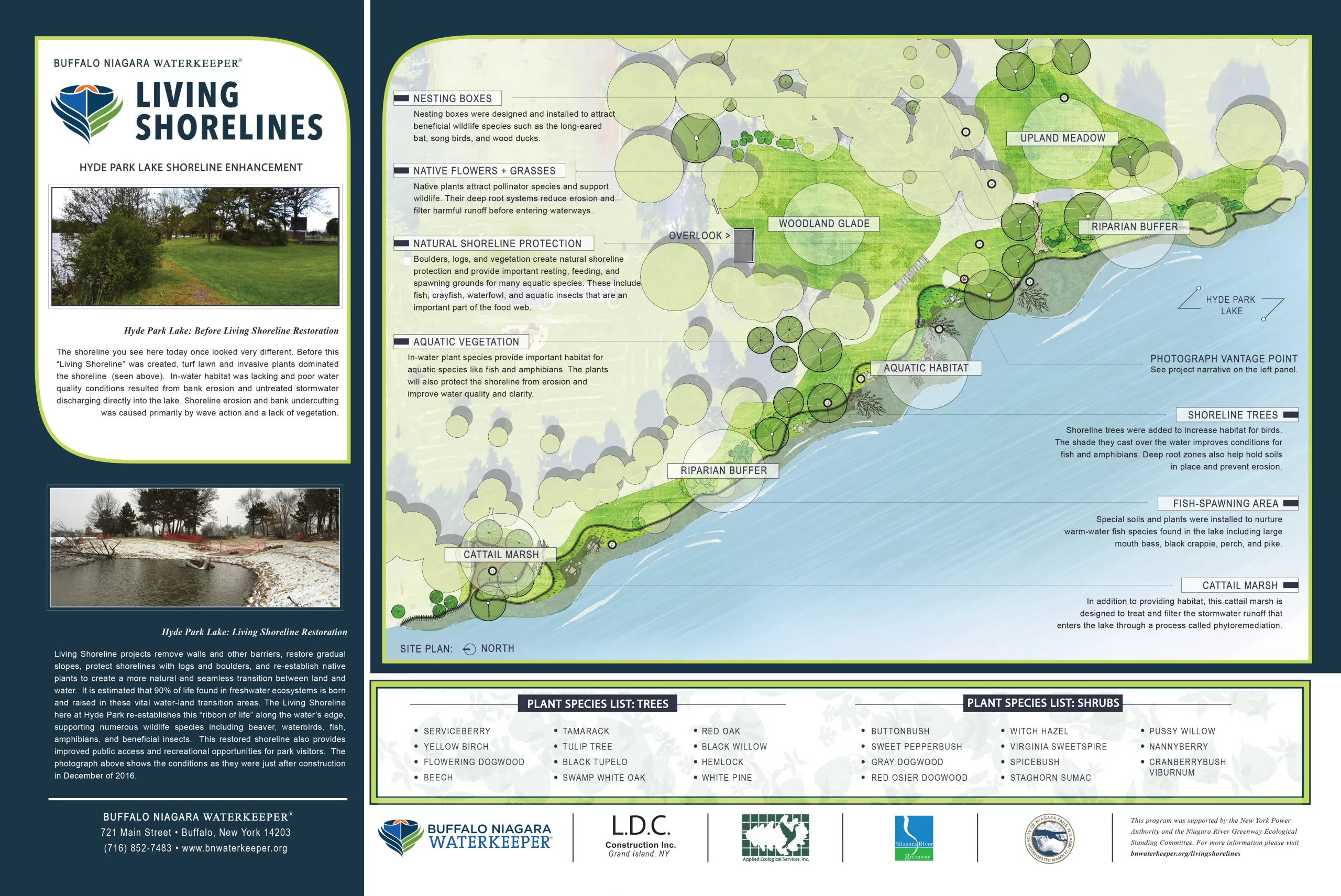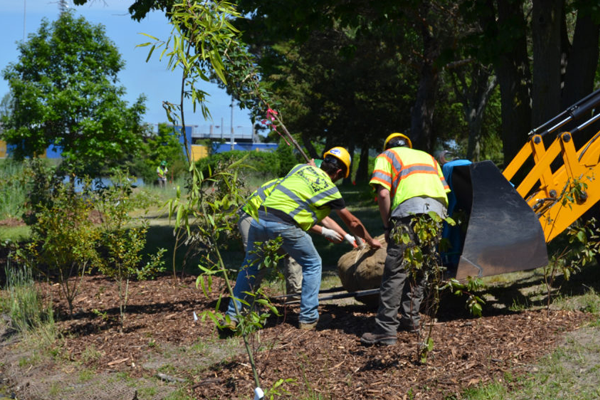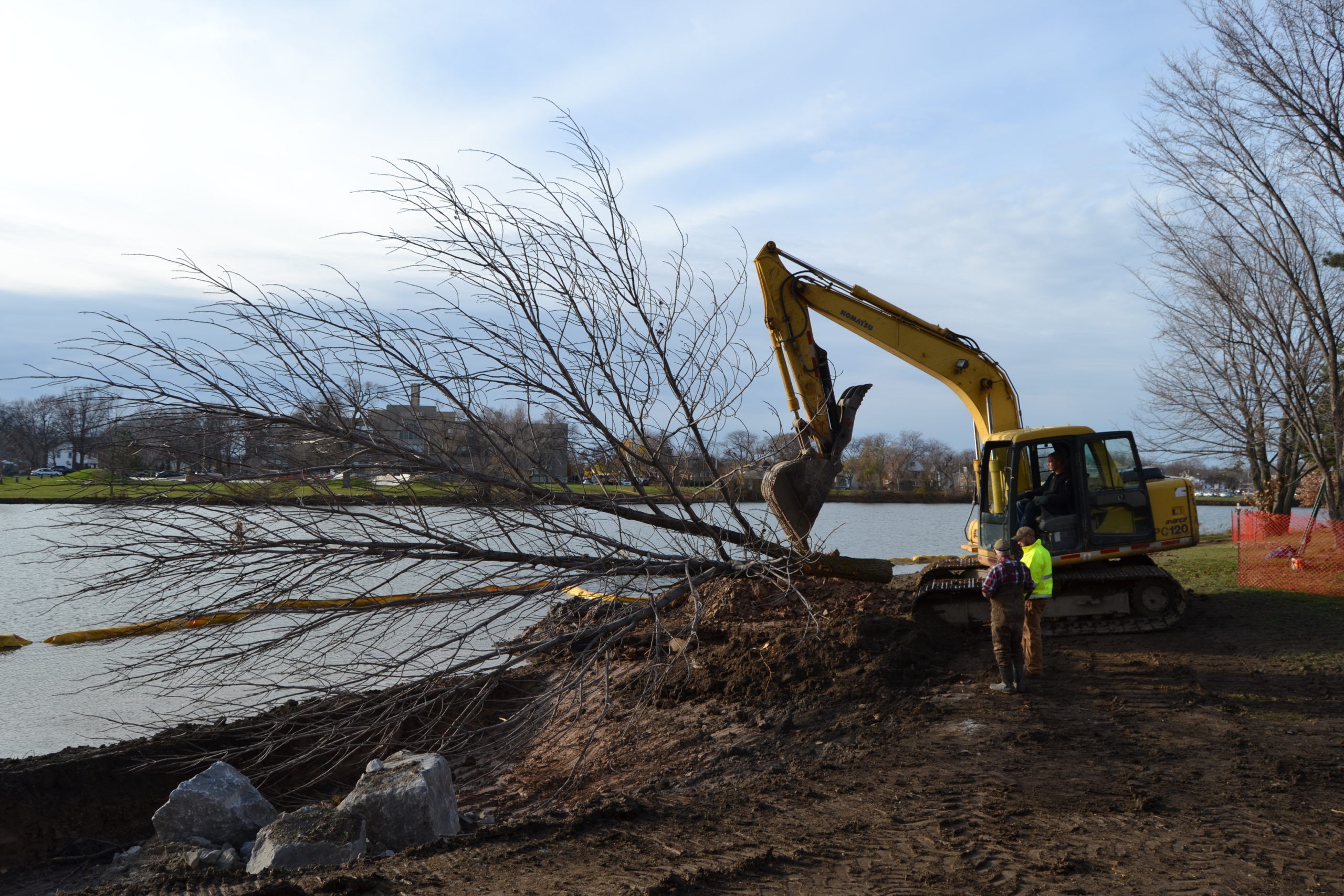This project begins to address ongoing bank erosion that can be seen along much of Hyde Park Lake.
Buffalo Niagara Waterkeeper implemented a Living Shoreline project located in Hyde Park in the City of Niagara Falls, which was complete in 2017. Hyde Park is a large municipal park with Hyde Park Lake and gill Creek as its central features. The park provides an array of recreational opportunities including an 18-hole golf course, baseball field, skate park, and tennis courts. The project restores habitat along the shoreline and helps to address the lake’s poor water quality and algae blooms which have also been a concern in recent years.
Partners
Greenway Ecological Standing Committee
City of Niagara Falls
LDC Construction
Applied Ecological Services Inc.
Ducks Unlimited
The Place
This Living Shorelines project is located along the southeast portion of Hyde Park Lake, adjacent to the former rose garden, in an area that improves approximately 600 feet of shoreline.
The project enhances the park experience for residents and visitors, while also improving water quality and providing critical habitat for wildlife species including warm-water fish, bats, waterfowl, songbirds, and amphibians.
The Project
The following improvements were implemented as part of this project:
New grading to create a gentle slope along the shoreline, improving connectivity between the land and water;
Creation of diverse habitat types including cattail marsh, woodland glade, meadow, and aquatic;
Plantings of over 1,300 native plants along the shoreline and in the water to protect the shoreline from erosion, improve water quality by absorbing pollutants and adding oxygen to the water, and providing important habitat for a variety of species; and
Creation of habitat complexity in the water and along nearshore areas to reduce erosive forces from reaching the shore, and to provide critical resting, spawning, feeding, and nursery habitat for fish, and perching areas for birds. This was achieved through strategic placement of boulders, plants, and woody material.





